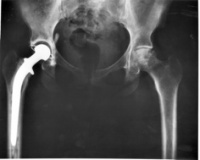New marker system leads to better implants
Hip-replacement surgery is a complex and exacting process. Currently, in order to ensure that patients receive the correct design and size of implant, orthopaedic surgeons perform a digital templating process that uses a single radiological scale marker to calibrate a radiograph.
The deployment of these single-scale markers, however, can be invasive and uncomfortable. Worse, the results obtained from them can be highly variable. That’s because a single marker – which often comprises a sphere mounted on a flexible arm – must be precisely positioned in the coronal plane of the hips and hence requires special expertise and time to apply correctly.

Now, a simple piece of equipment called KingMark, developed by Warwick University and University Hospitals Coventry and Warwickshire (UHCW) orthopaedic surgeon Richard King, in collaboration with Prof Damian Griffin at the university’s Warwick Medical School, is bringing a new level of accuracy and ease of use to the templating procedure.
Register now to continue reading
Thanks for visiting The Engineer. You’ve now reached your monthly limit of premium content. Register for free to unlock unlimited access to all of our premium content, as well as the latest technology news, industry opinion and special reports.
Benefits of registering
-
In-depth insights and coverage of key emerging trends
-
Unrestricted access to special reports throughout the year
-
Daily technology news delivered straight to your inbox










Water Sector Talent Exodus Could Cripple The Sector
Maybe if things are essential for the running of a country and we want to pay a fair price we should be running these utilities on a not for profit...